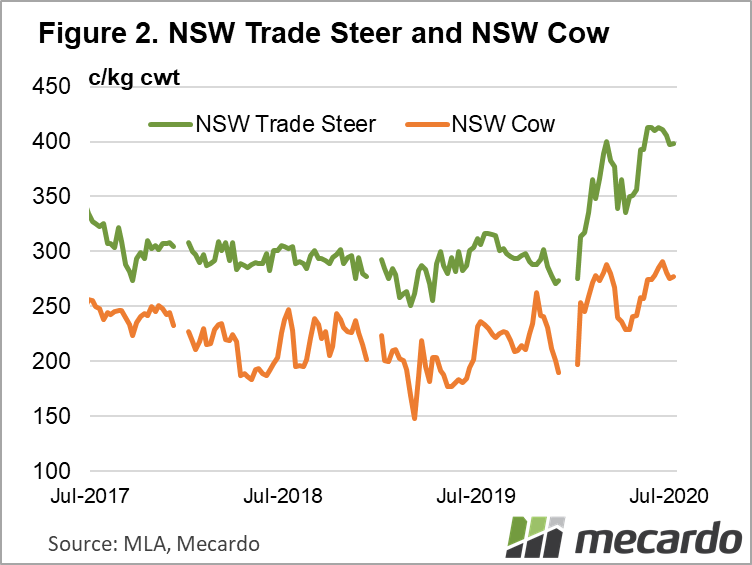With much of eastern and central NSW receiving a fair dumping of the good stuff (rain) in recent days, fears the season might be diminishing have been dampened. But with national herd figures at their lowest point in decades, and cattle prices at some of their highest, what stock is accessible to the average cocky looking to turn green grass into beef?
The national price indicator for restocker steers sold at the saleyards averaged 795 cents a kilogram carcass weight for the April to June Quarter of this year. That is very close to 300¢/kg higher then the same quarter last year.
In comparision, the heavy steer price for the same period was 662¢/kg, just 136¢/kg higher year on year. Despite that, as we recently reported here there is still the opportunity for good margins to be made backgrounding young cattle.
But if you have grass or early sown crops that need eating now, and the tight supply and competition for young stock is making it difficult to obtain, are there other options?
PTIC cows averaged just a touch over $2000 on AuctionsPlus last week, while pregnant heifers sat at $1840. Let’s say they will have a calf on the ground by October, feed remains plentiful and you sell them split at 600kg and 200kg respectively in the new year – a return of $2471 at current prices. A margin, yes, but not a significant one, especially if fodder stores have come into play over the summer.
Empty females selling to restockers are harder to get a price gauge on, but if we use the current NSW medium cow indicator of 274¢/kg cwt (Figure 2), turning a 450kg cow into a 550kg cow will return you a $275 increase, not factoring in costs. Join that cow and sell pregnant or CAF – that’s a story for another day.
Of course drought mitigation, rather then trading profits, is likely on the mind of many, especially in those areas that have been battling drought for any length of time.
Locking up paddocks of grass – be it grain and grazing crops or pasture – for the silage season which is just six to eight weeks away in some areas, could be top priority for producers looking to replenish stocks.
The demand for hay and silage this winter has dropped, and along with it the price, for two main reasons. Producers in some regions have received plenty of rainfall since the autumn break teamed with warmer than usual winter weather, meaning feed has kept growing in front of their stock. And many producers no longer have the numbers, having destocked before the break and been unable to buy back in at the escalated prices.
But this is unlikely to phase the volume of hay & silage produced to any large extent this year, as wether making it for their own use or to sell on, memories of running out are still fresh.
What does it mean?
Cattle trading options will be highly dependent on production system and grass growing predictions for the spring, but given the current divide between restocker and finished pricing, margins are tighter then many may be willing to gamble on. This will put pressure both on beef production and herd rebuilding in the medium term, if seasons stay favourable.
Have any questions or comments?
Key Points
- Restocker steer prices are trading at nearly 300¢/kg higher year-on-year, while the heavy steer price is up just 136¢/kg.
- Trading other cattle classes could be an option, but margins still tight.
- Grass going uneaten likely to result in bumper silage and hay season if rain continues.
Click on graph to expand
Click on graph to expand
Data sources: MLA, AuctionsPlus, Mecardo













